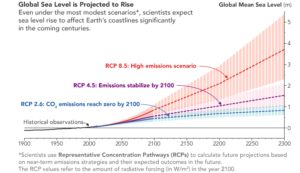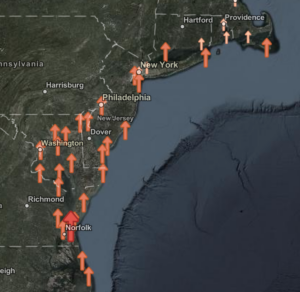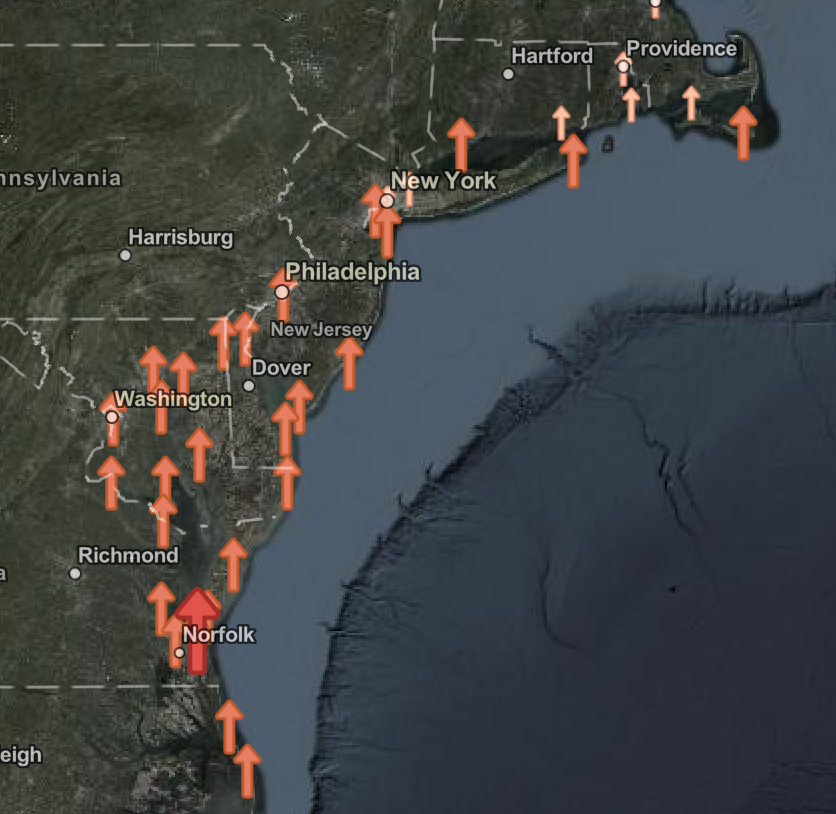Sea level rise is one of the most significant environmental challenges facing the world today. According to the Intergovernmental Panel on Climate Change (IPCC), global sea levels have risen by 0.2 meters over the past century, and the rate of sea level rise has accelerated in recent decades.

While estimates vary, around 1.5 billion people are at risk of flooding due to sea level rise. However, the vast majority of people have contributed very little to the causes of sea level rise.
There is a popular yet concerning statistic that is often tossed around:
“Roughly 100 companies are responsible for 70% of global emissions which are one of the main drivers of sea level rise”
Yet these companies are not the ones facing the rising tides; it’s largely the global majority and the poorest people on the planet who bear the brunt of it. The injustice could not be more clear. People are losing their homes and even their homelands as the result of irresponsible emissions practices by companies pulling in billions of revenue.
Who is Most at Risk?
In United States, the East Coast is particularly vulnerable to sea level rise due to its low-lying topography and high population density.

About 40% Of Americans living in coastal areas live in ares considered “at risk” of flooding. The majority of these are Black and minority communities. Often, they were the ones living in flood planes due to share cropping and redlining tactics.
Furthermore, other social injustices like the lack of green space and therefore permeable surfaces in BIPOC neighborhoods worsen flood events. And this report indicats that BIPOC communities are also more likely to have storm drain systems that are not up to date and cannot handle the water levels.
These issues are further worsened because of the differences in the rates at which sea levels will rise on the East Coast.
Different Impacts Correspond to Different Rates of Rise
The seas will not rise at one uniform level as if you were overfilling a cup in the sink.
The map below shows expected trends in sea level rise along the East Coast. Higher risk is indicated by larger and redder arrows, showing Norfolk as the most at risk area pictured. Due to the variety of coastal topography, the impacts of oceanic currents and other environmental factors, specific regions are at far higher risk than other areas.
Due to the variety of coastal topography, the impacts of oceanic currents and other environmental factors, specific regions are at far higher risk than other areas.
Emergency services and their response times may vary in different communities so it is very important for communities to understand how prone their land is to flooding.
A recent study, for example highlights the injustices that can be seen in the level of damages experienced by different communities during flooding events. When looking at the decimation of Houston in the wake of Hurricane Harvey we can see that the majority of people living in the existing flood plains are minorities. Furthermore we see that these ares have fewer resources and generally receive lower response times in flooding events then their white neighbors despite being the ones living in the active flood plain.
These inequalities are also perpetuated by the structure of America’s Flood Insurance Program.
The National Flood Insurance Program Exacerbates Injustice
The National Flood Insurance Program (NFIP) is the government program that provides flood insurance to homeowners and businesses in flood-prone areas. While the program was created to help those who are most vulnerable to flooding, it has been criticized for perpetuating social injustice and exacerbating inequality.
One of the key social justice issues associated with the NFIP is that it has historically subsidized flood insurance premiums for wealthy homeowners, which means that low-income families, who are often unable to afford flood insurance, end up subsidizing the insurance premiums for wealthier homeowners. This results in an unfair distribution of resources, with the most vulnerable communities being left without adequate protection.
Additionally, the NFIP has been criticized for not adequately addressing the root causes of flooding, such as climate change and poor land-use policies. By providing flood insurance without addressing the underlying causes of flooding, the program is effectively treating the symptoms of a larger problem, rather than addressing the problem itself. This can be clearly seen in these maps of Houston’s flooding in the wake of Hurricane Harvey that further highlight the higher risk of flood-induced toxics exposure experienced by minority communities in proximity to industrial sites.
Another issue with the NFIP is that it can incentivize people to live in flood-prone areas, as they know that they will be able to obtain flood insurance. This can lead to the development of more homes and businesses in these areas, which in turn can increase the risk of flooding for everyone in the community. This dynamic can be particularly harmful for low-income families, who may not have the resources to move to safer areas.
In recent years, there have been efforts to reform the NFIP to address these social justice issues. For example, some have called for the program to prioritize funding for low-income communities, rather than subsidizing premiums for wealthy homeowners. Additionally, there have been calls to invest in measures that can help prevent flooding, such as improving infrastructure and implementing better land-use policies.
What Can You Do?
As sea level rise continues it is important for homeowners to understand their own risk as well as understanding the inherent risks and flaws that exist in the current system.
There are steps individuals can take to reduce the risk of sea level rise as well as combatting some of the injustices that come along with it.
At home:
- implement flood mitigation measures, such as elevating your home above projected flood levels, installing storm-resistant windows and doors, and using waterproofing materials to prevent water damage.
- create natural drainage systems like rain gardens, green roofs, and permeable pavement to reduce runoff and improve water quality. These two websites provide further insight into these possible solutions.
On a political level:
- Advocate for policies that prioritize climate action and resilience
- Call your local and state representatives
- Attended local community meetings and town halls
- Support green infrastructure projects
- Donate to relevant organization and campaigns
These steps will also help minority communities facing increased impacts from flooding.
Many people are unaware that flooding is an issue that disproportionately affects BIPOC and low-income communities. Raising awareness, as well as advocating for justice-focused climate policies can help support the communities most affected by flooding and sea level rise.

